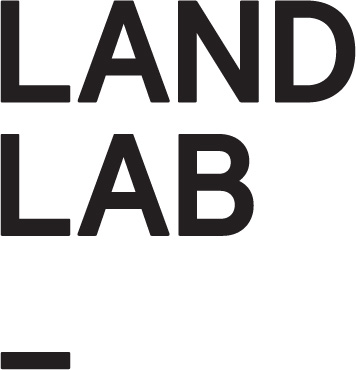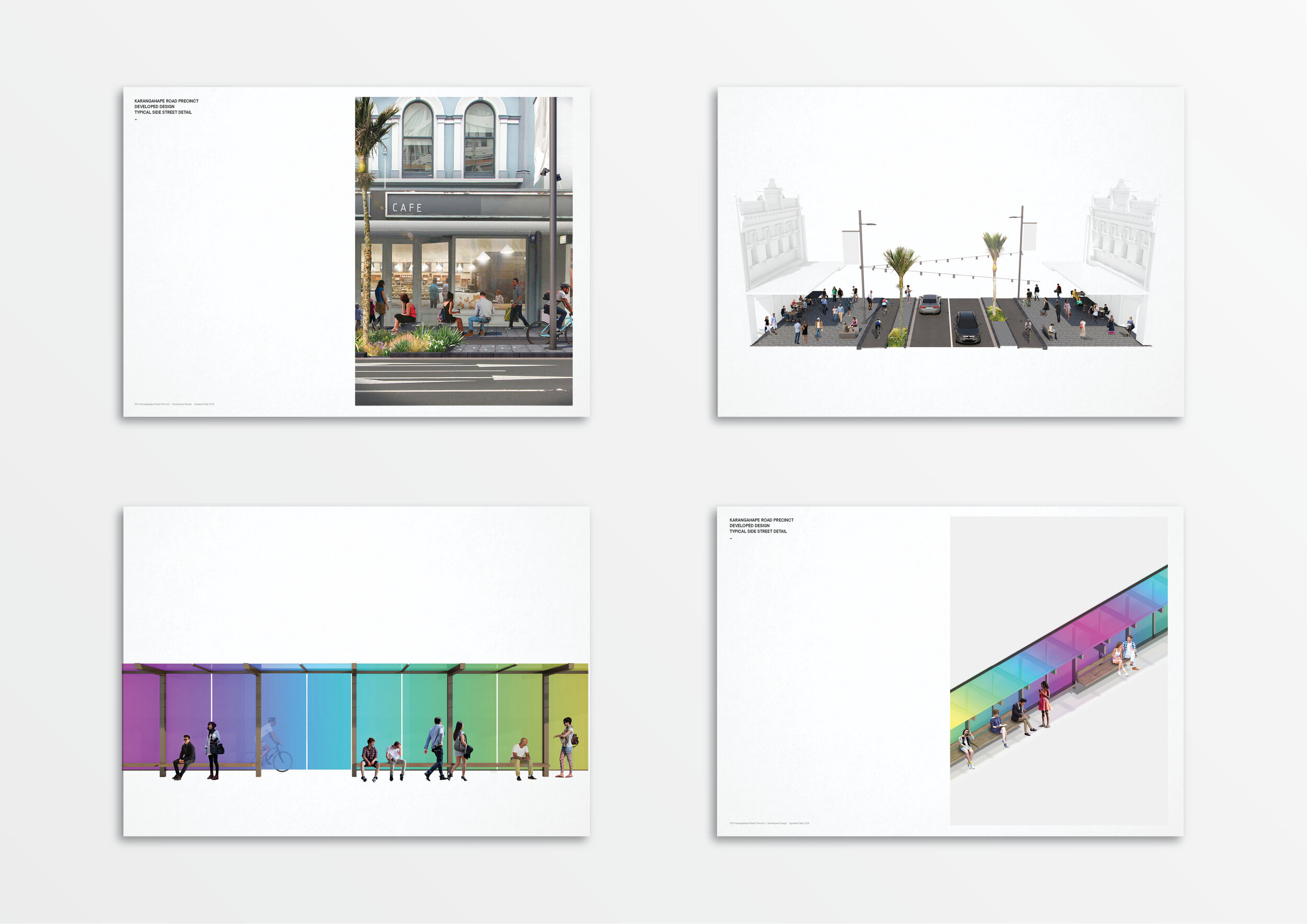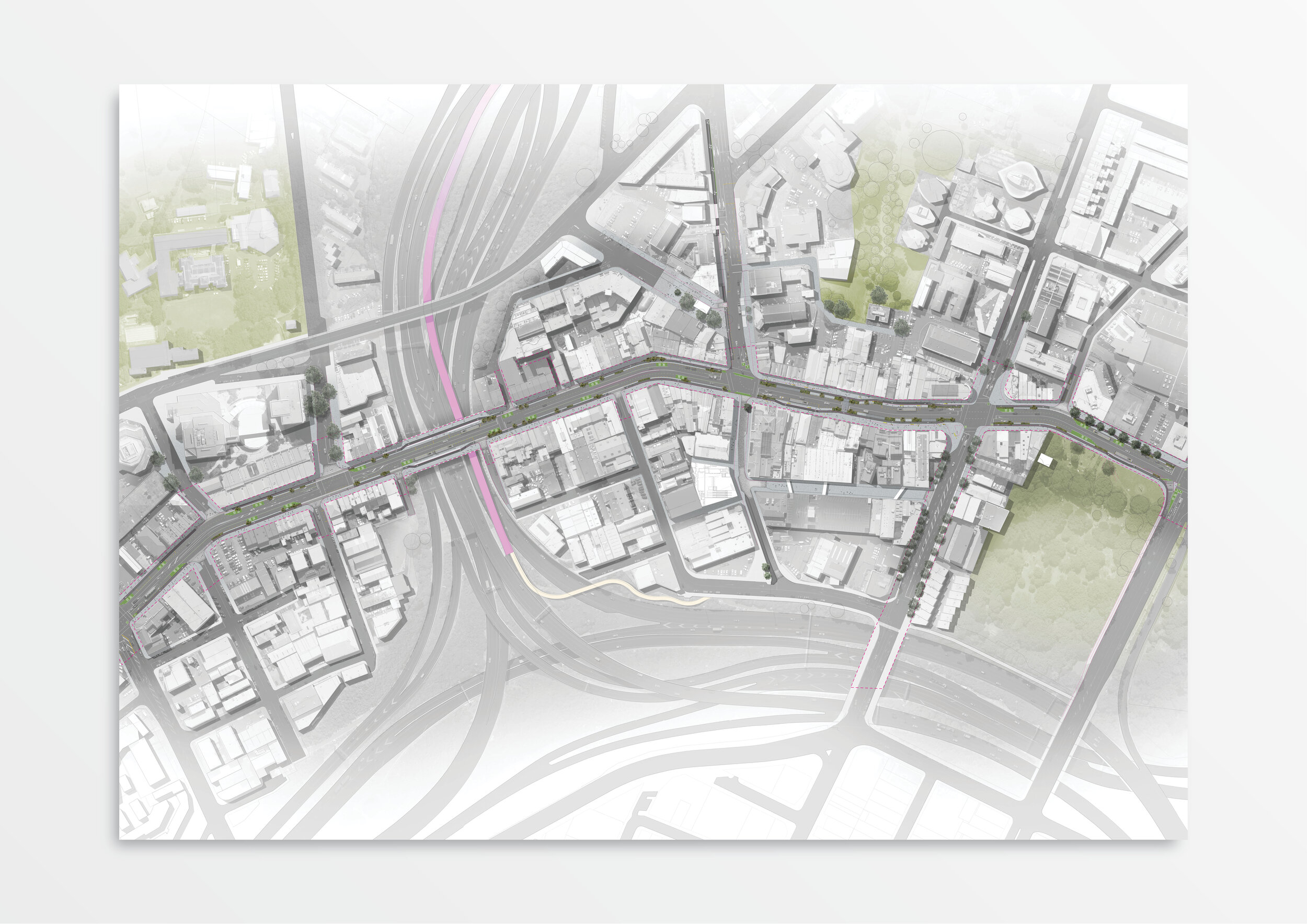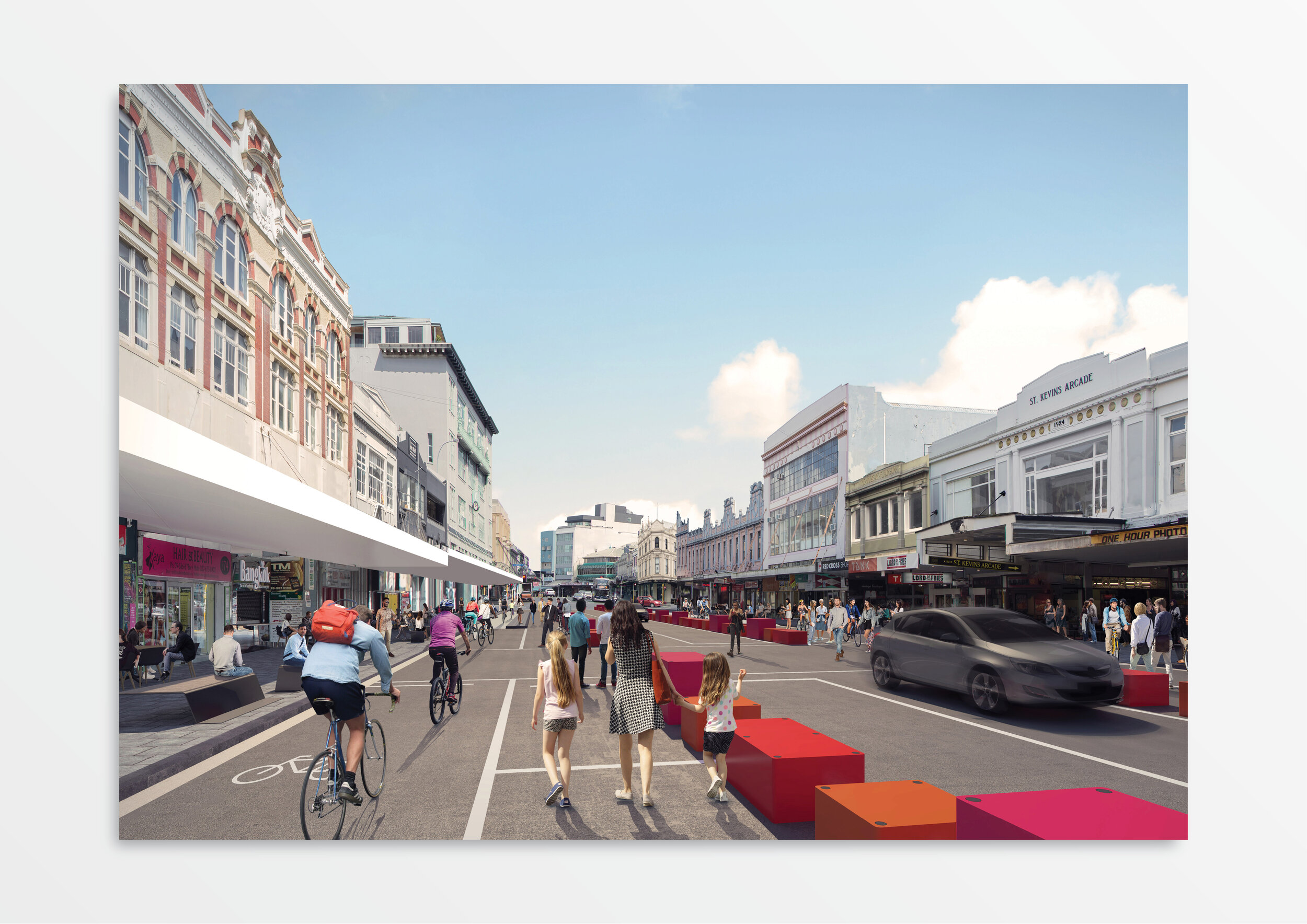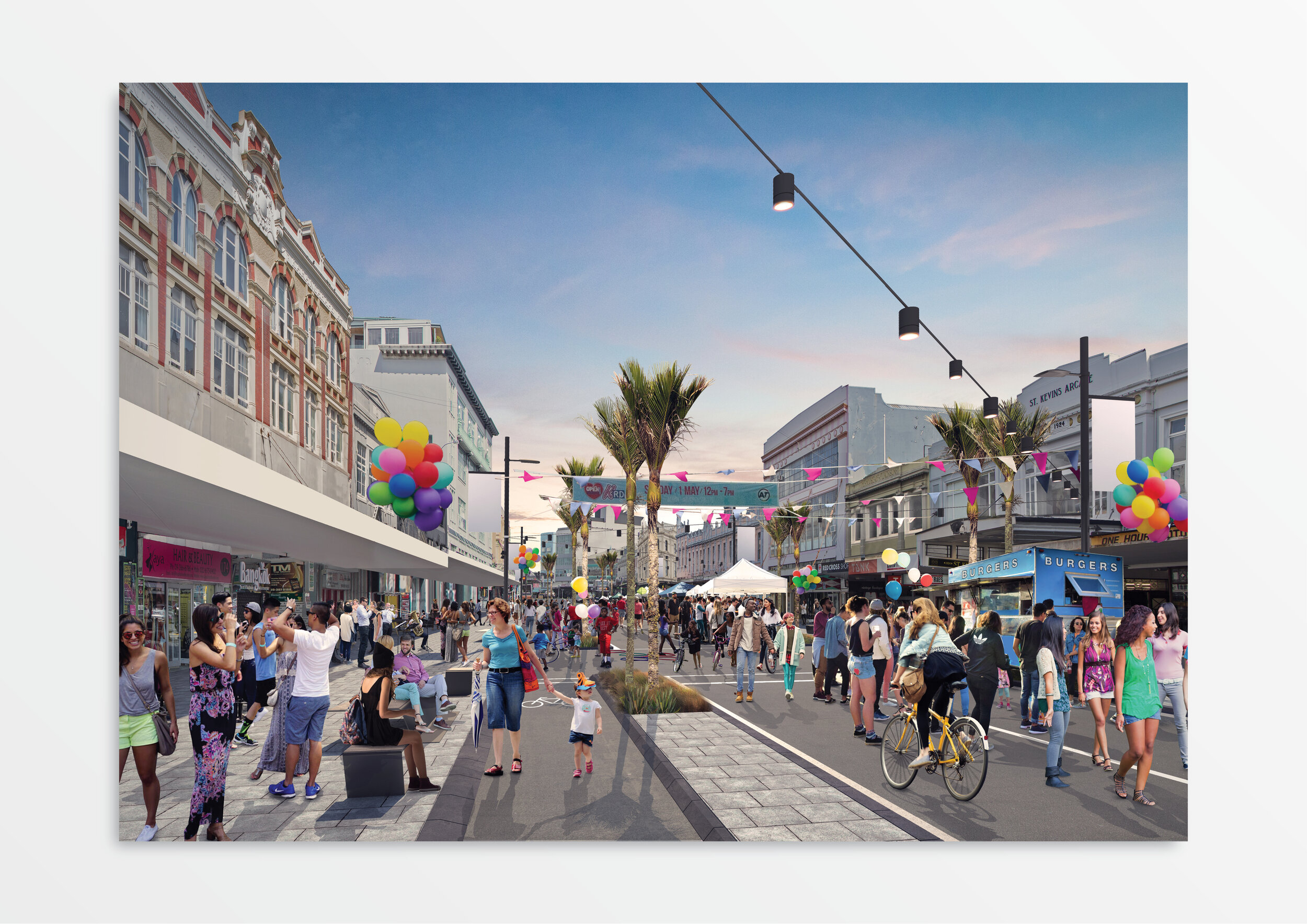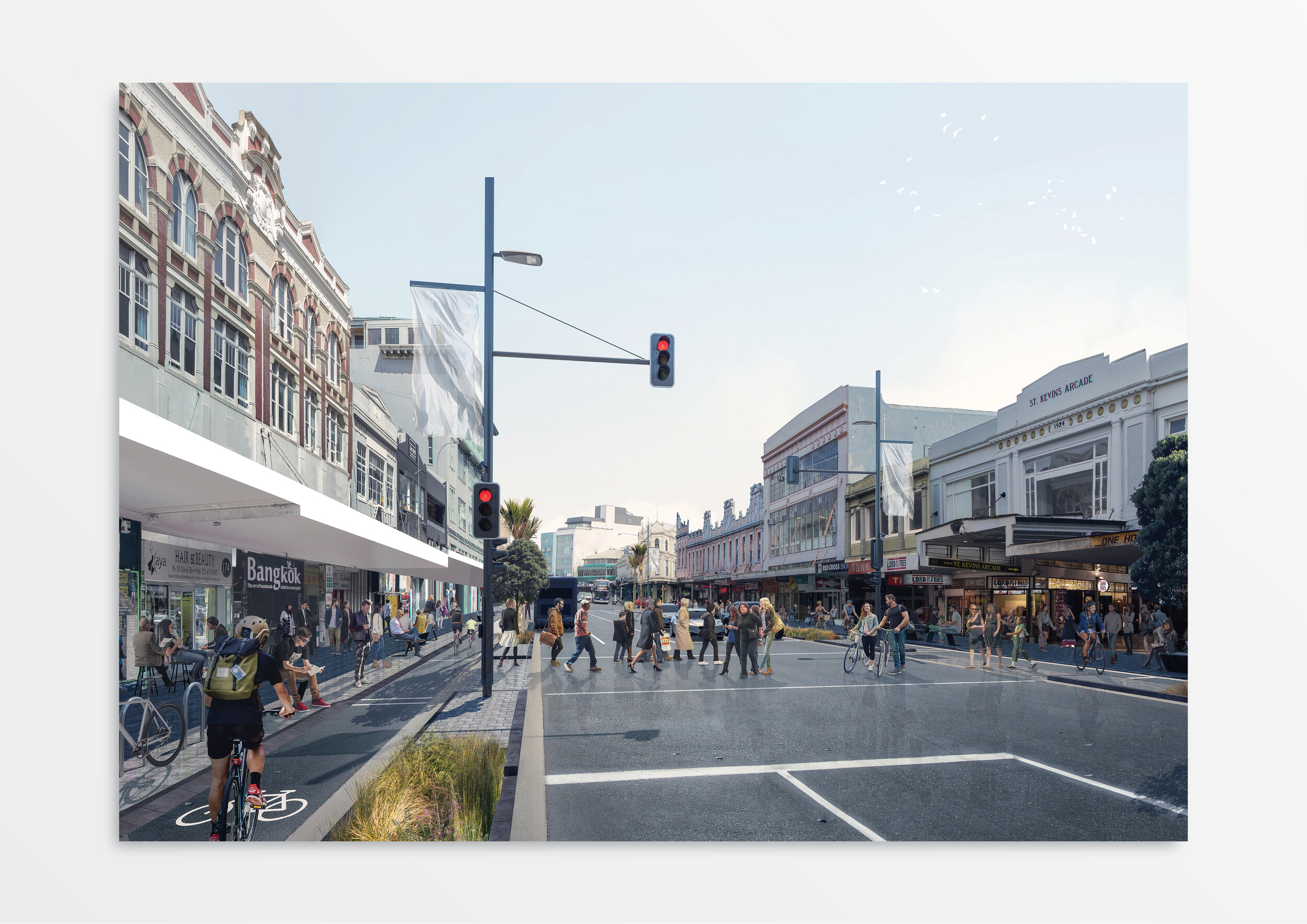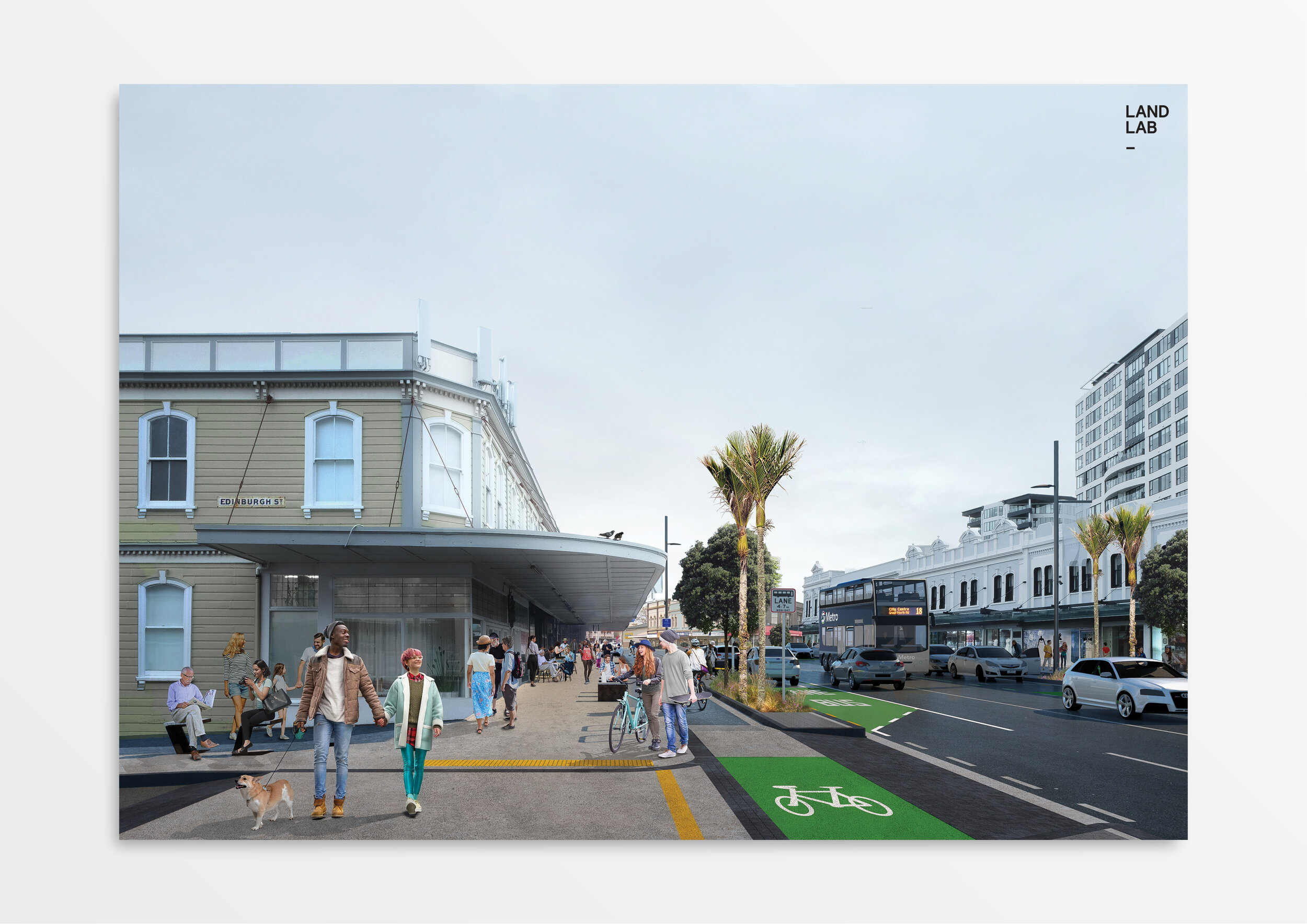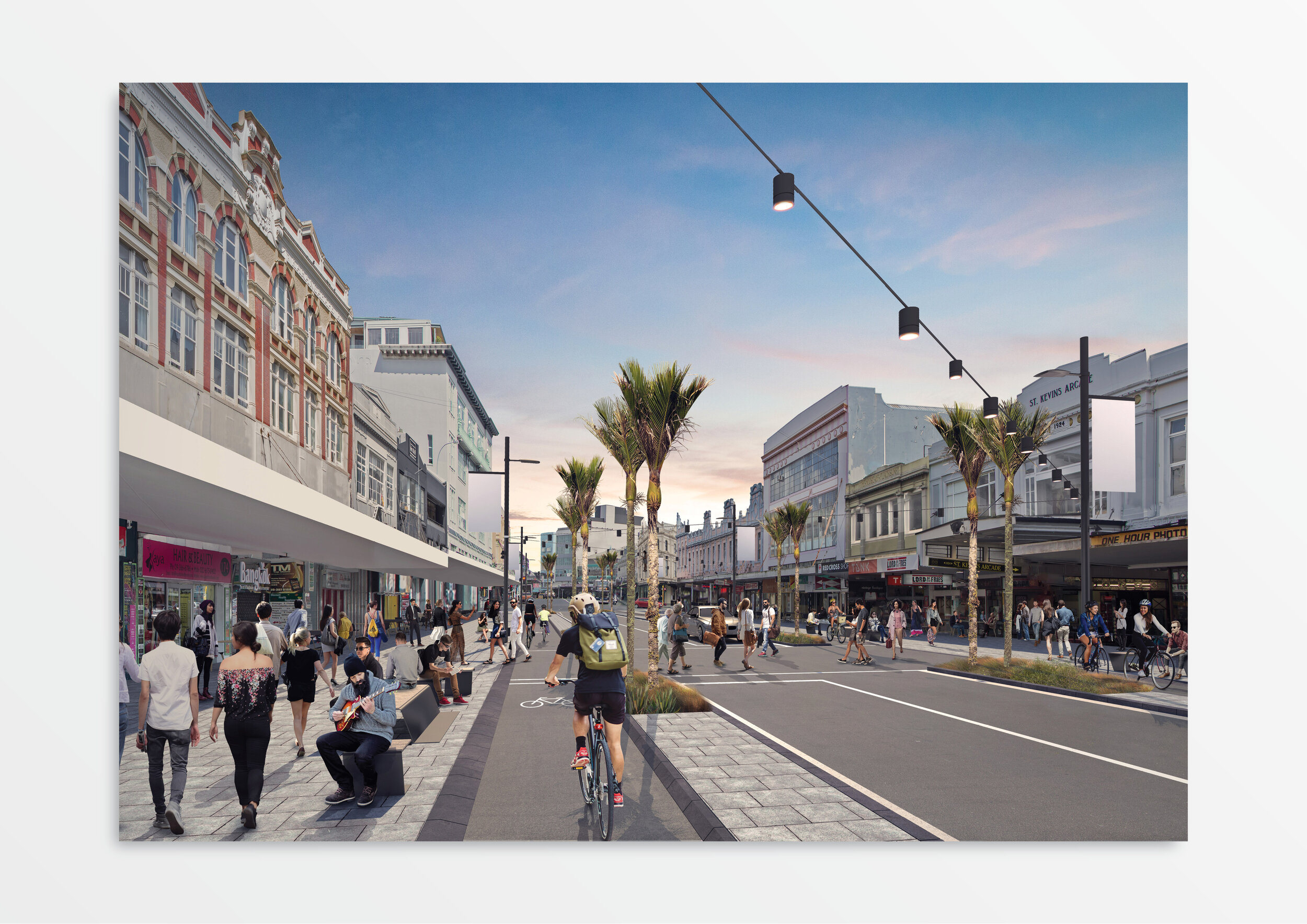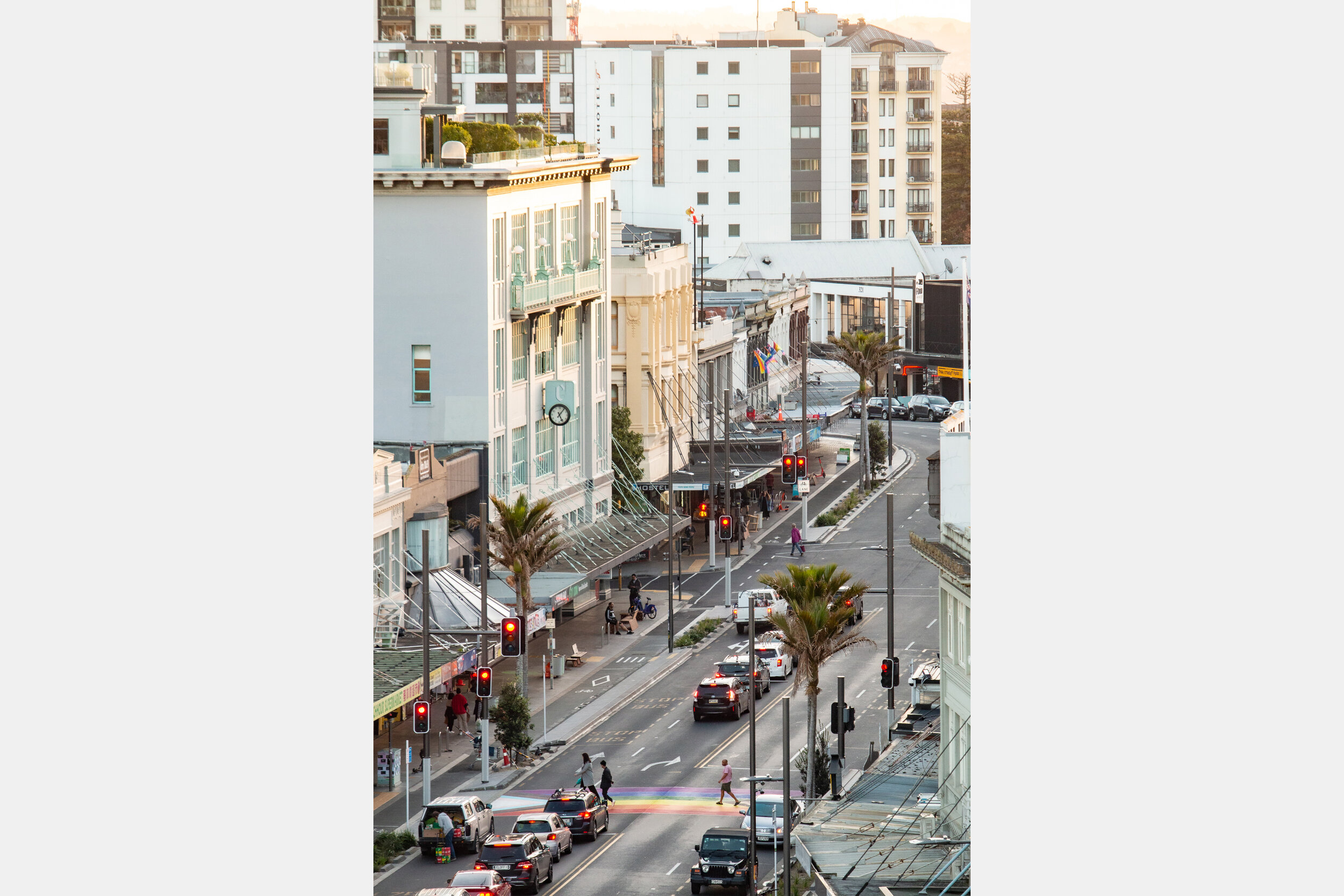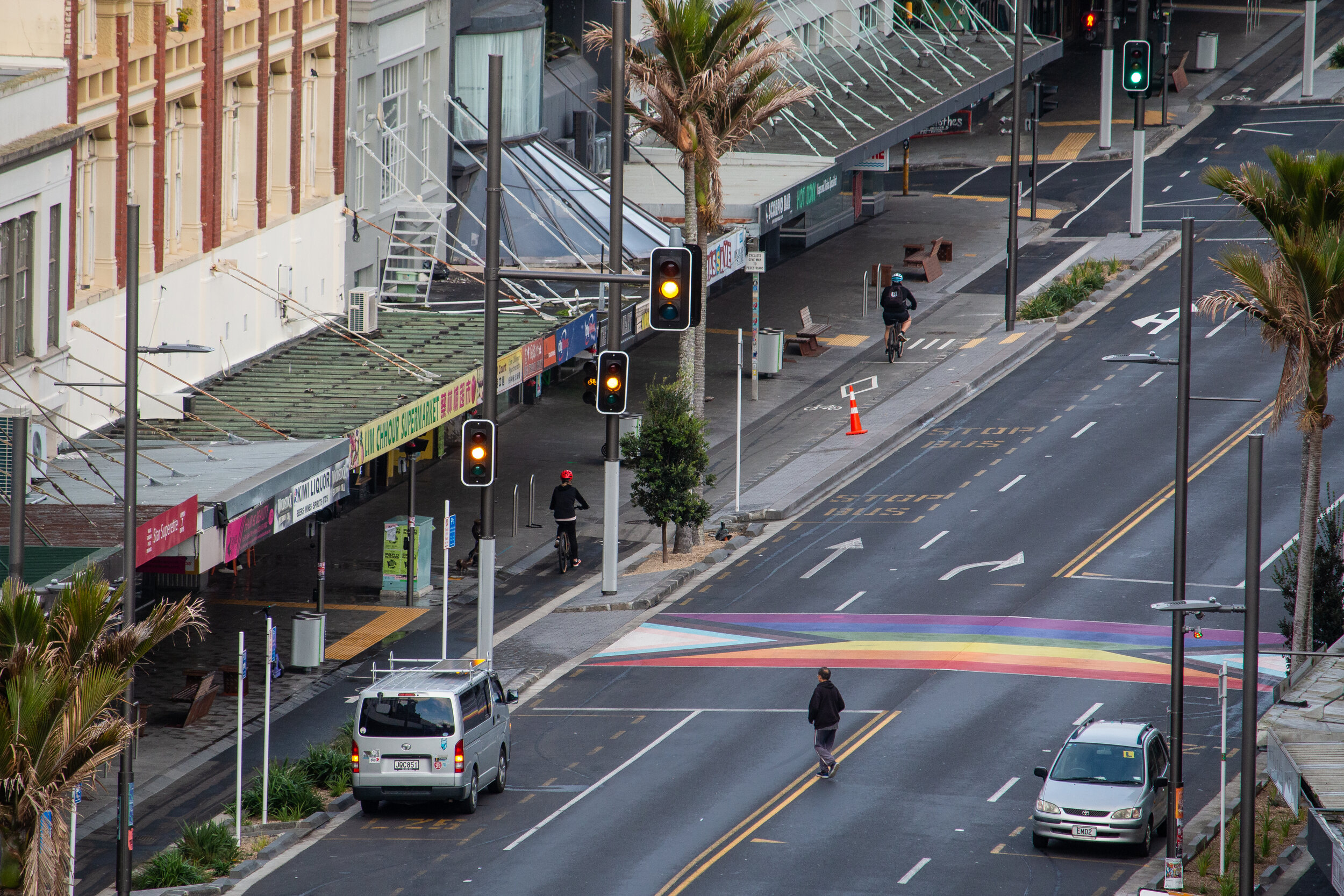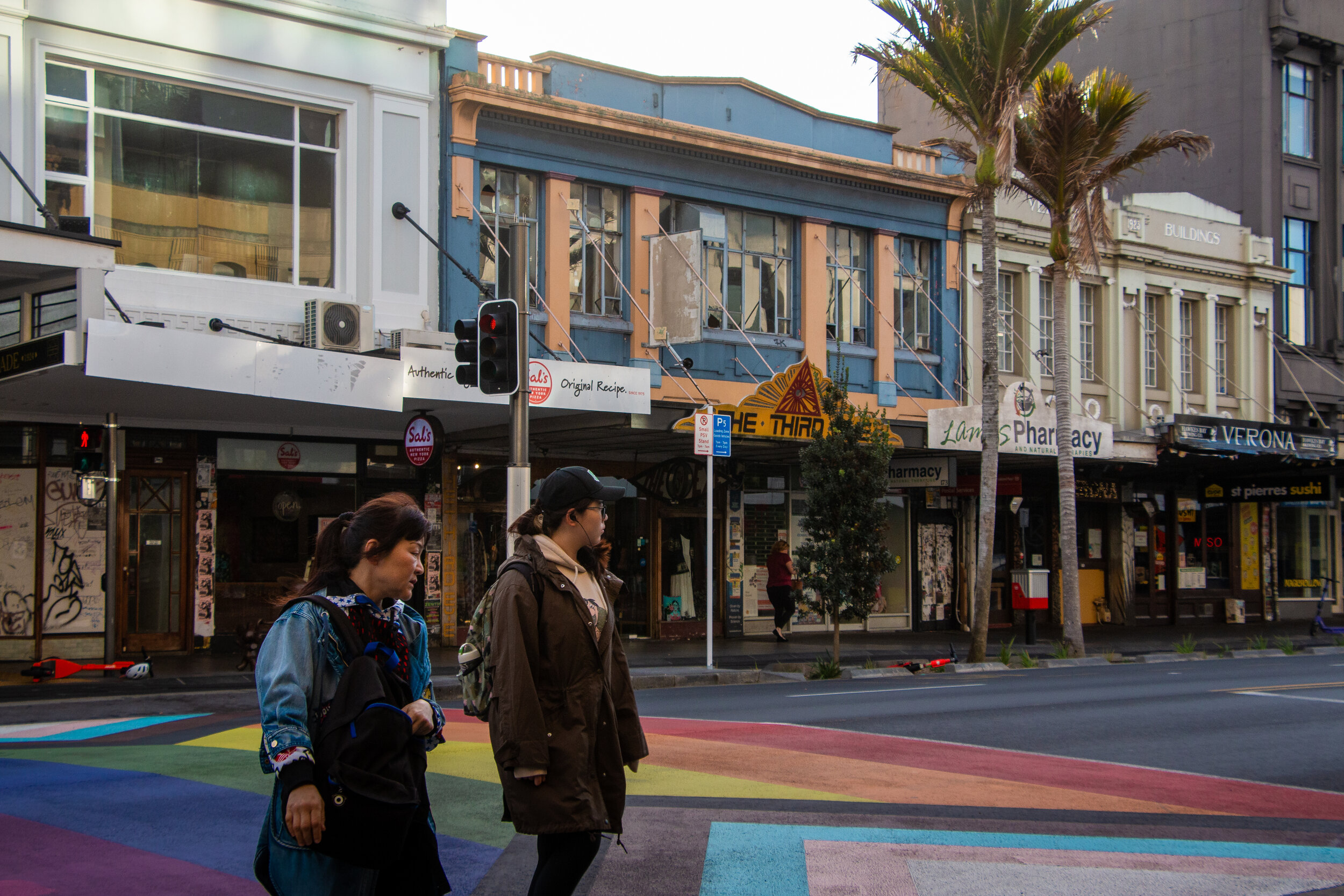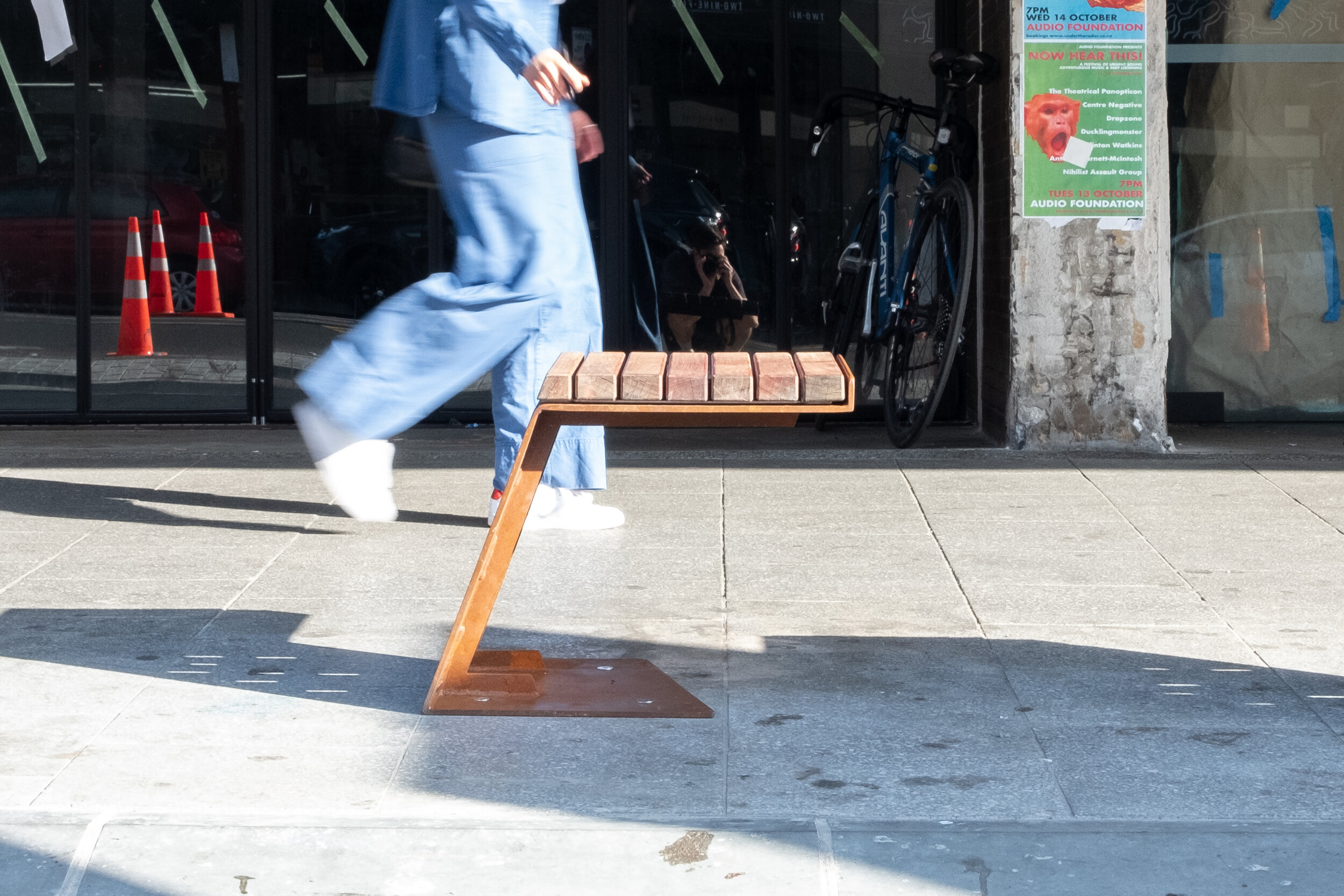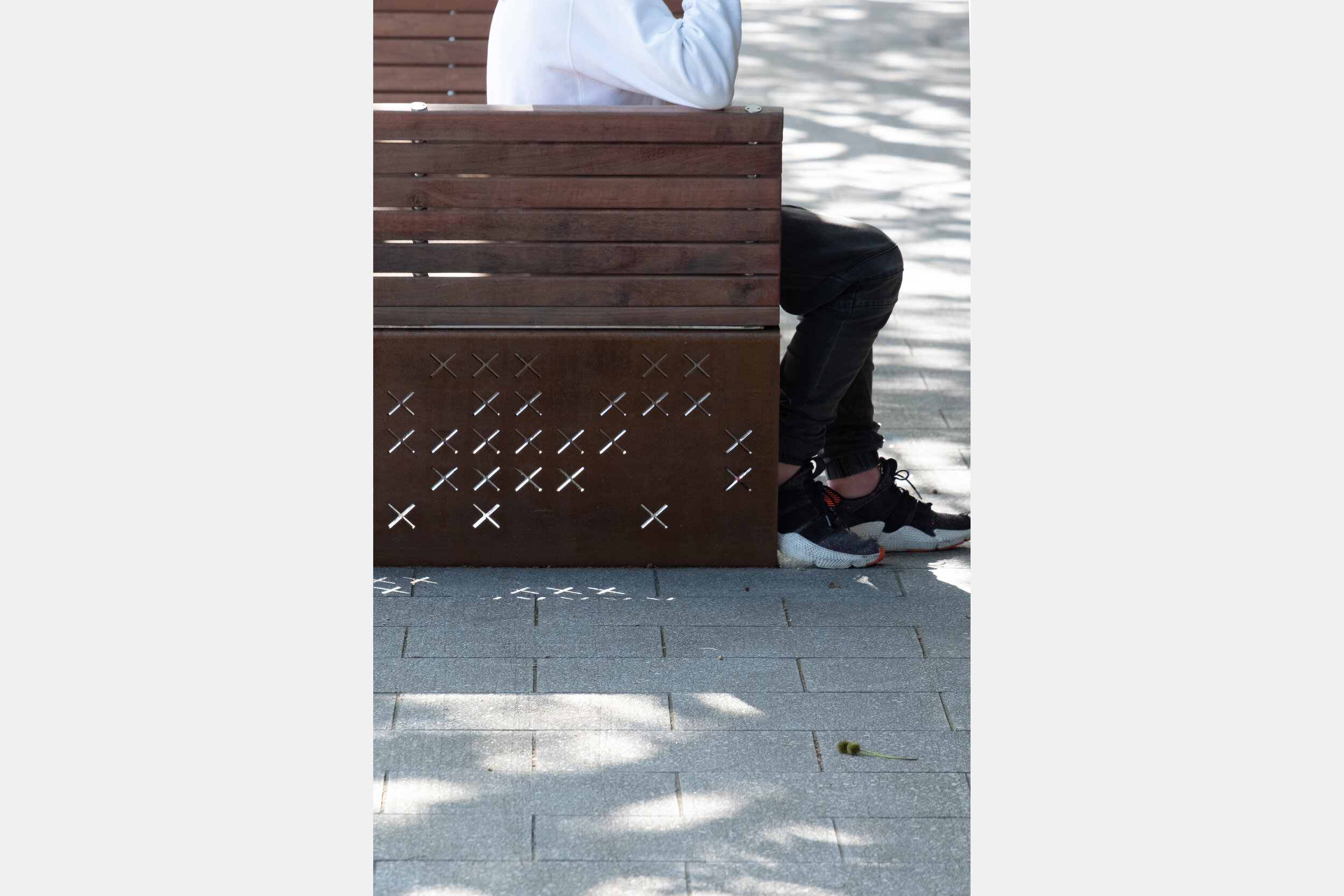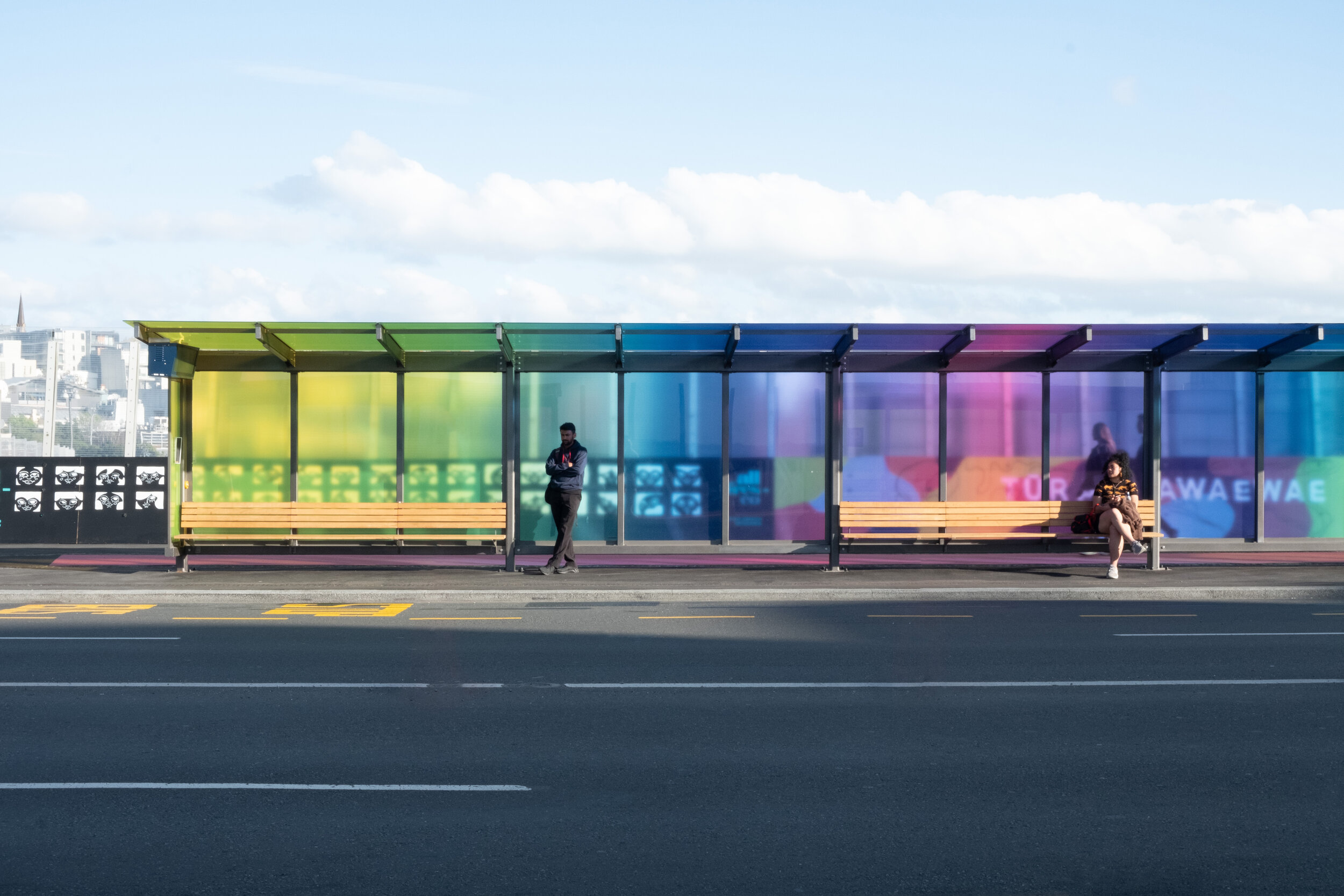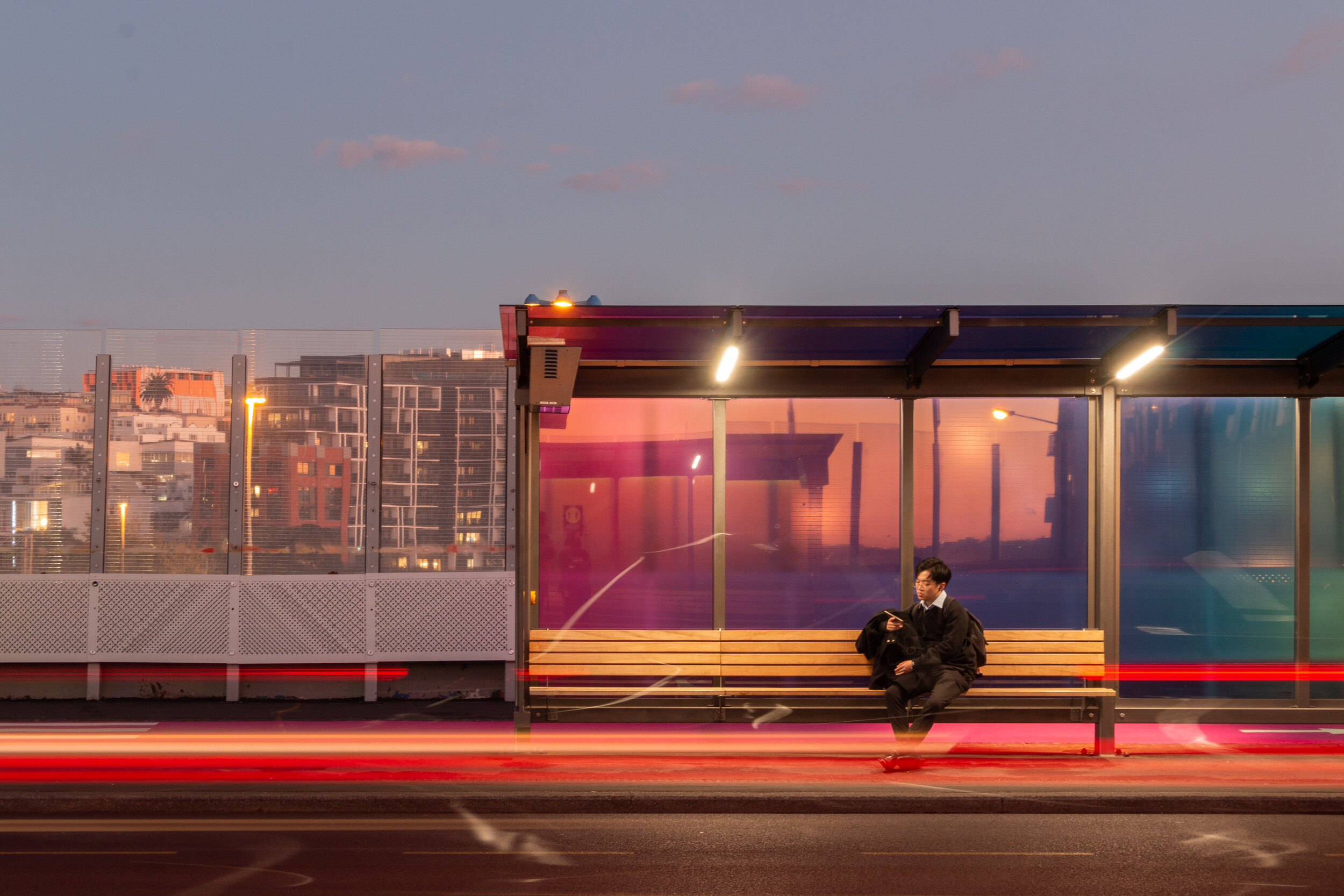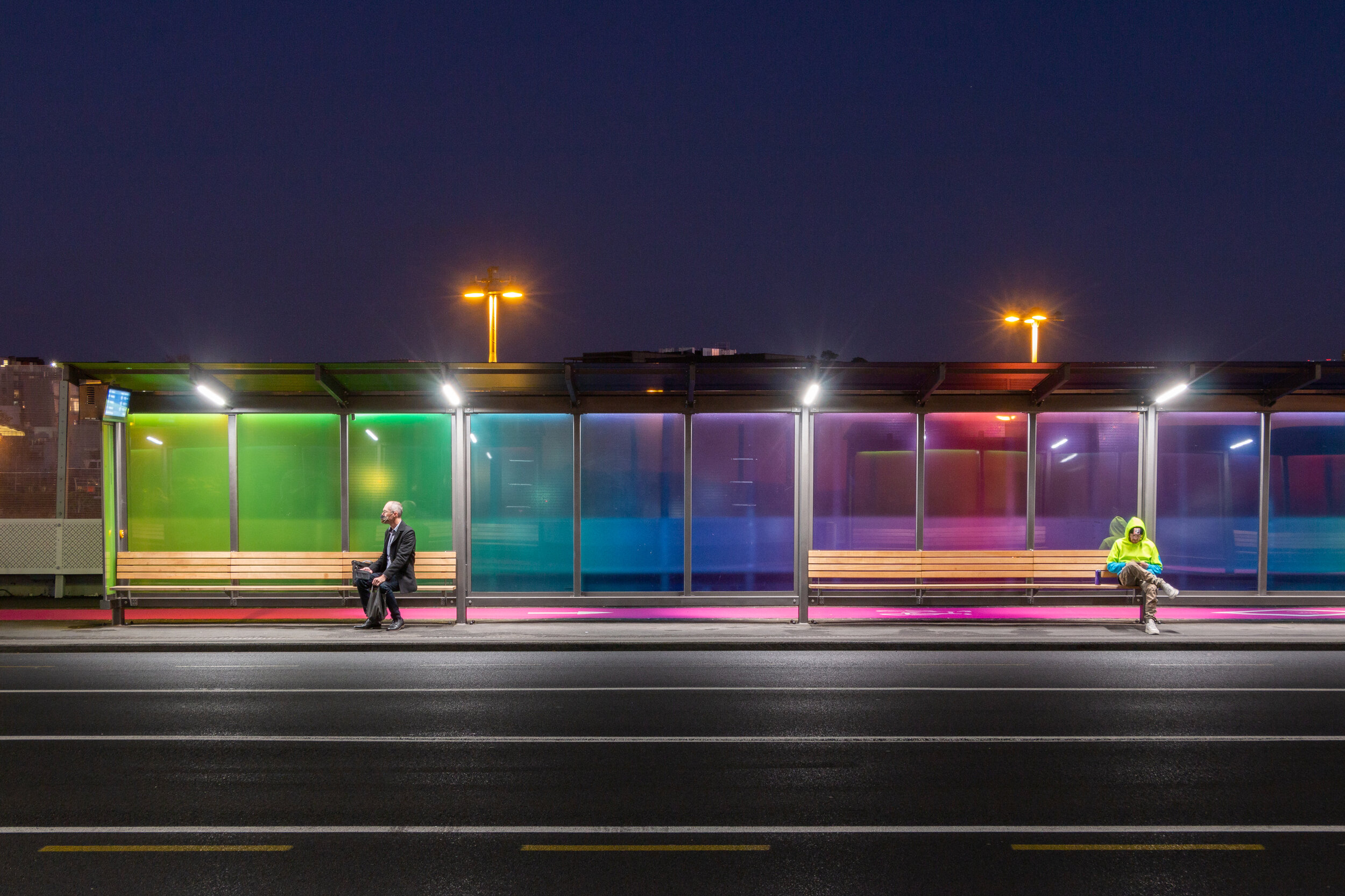Karangahape Road Streetscape Upgrade & Precinct Plan_
The recent improvements to Karangahape Road have delivered a holistic public realm upgrade to one of Aucklands most iconic streets. The brief of a cycle lane along the kilometre length of Karangahape Road expanded into broader public realm improvements, acknowledging the unique heritage of the street and its diverse community.
The intent was to transform the street to be a destination rather than just a transport corridor, by integrating different transport modes in a cohesive way. The integration of these modes with the streets existing character required extensive design research and an innovative consultation strategy. The project has reallocated space within the street to support walking, cycling and public transport as priority modes. It increases the provision of non-vehicle public space from 30% to 50%.
The historic significant of the Karangahape Road ridgeline as a key walking route was developed in partnership with mana whenua, resulting in project aspirations of pedestrianisation, sustainability and embedded mahi toi elements. Working alongside local mana whenua artist Tessa Harris – the mahi toi were developed - with the elements on the overbridge taking particular significance.
Tessa was involved in repurposing screens from the sides of the overbridge to use with tukutuku weaving along with students from Auckland Girls Grammar, relating to both Mangawhau and the Waitematā. As a uniquely diverse community, consideration was given to how best represent this sense of place within a street upgrade.
An approach was formed that the street should be simple, cohesive and recessive, urban and of high quality, and most importantly, provide the space for the community to use the street to its fullest. There was strong community feedback that the identity of Karangahape Road was not necessarily with the street itself – but the people and community that inhabit it.
The key design elements of the project included a separated cycleway, improved footpaths, new street trees, raingardens and a site-specific suite of social furniture.
Within a New Zealand context, cycle infrastructure is still young. This is one of the first examples of such a project in a high street environment, along one of Aucklands's most infamous, iconic and creative streets. The success has been in providing people more transport options of how to get to Karangahape Road and allowing the changes to the street to further enhance its existing character. The spatial changes have increased green space, amenity and comfort along the street which still feels very ‘K Road’
Bus Shelter
The recently completed bus shelters on Karangahape Road are a simple yet elegant piece of infrastructure. Within the broader project, the elements on the overbridge are the key mahi toi expression for the upgrades. This has been expressed through tukutuku weaving of repurposed steel screens and the new bus shelters.
There was a clear mandate from the local community that standard designs would not be appropriate. The bus shelters were an opportunity to expand on this. The brief was to be bespoke, elegant and vibrant – representative of the colourful creative community.
The specific colours of the glass were a narrative of pāua, developed with a local mana whenua artist. This represented the importance of the overbridge and its views as the 'eyes' of Karangahape Road. The overbridge is the only place along the street with views to the broader landscape of Mangawhau and the Waitematā. The significance of pāua is that it is traditionally used in Māori carving as the eyes.
Location_ Tāmaki Makaurau - Auckland, New Zealand
Client_ Auckland Transport + Auckland Council
Date_ 2015
Budget_ $15m
Team_ BECA (civil, transport, lighting) + MRCagney (cycling)
